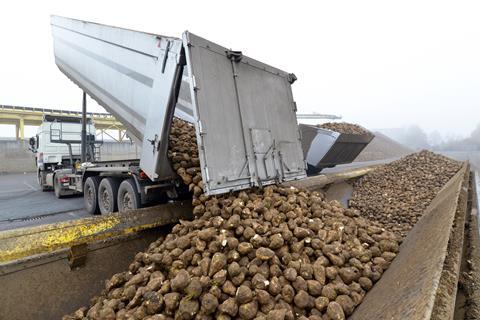
EU sugar prices, while not yet recovered from their decline in 2017, have shown instability in recent months.
So far this year, EU sugar prices have averaged €0.49/kg, 27% lower than the average price from 2010 to 2016. However, prices have risen 6% over the past quarter amid speculation of reduced EU output.
Sugar manufacturers’ margins have been hit by continuously low prices since the end of EU quotas in 2017, prompting a strategy shift among some that could pose a long-term risk for the EU sugar market.
Südzucker, one of the largest sugar processors in the region, has announced capacity closures in 2020 that would potentially withdraw 700,000 tonnes from the EU market (4% of EU production).
This decision is the first signal of a possible decline in sugar beet areas across the EU as current prices are not profitable for domestic producers.
EU sugar production was also hit hard by the droughts in 2018.
The UK sugar beet area and production are forecast to fall by 7% and 3% year on year in 2019 respectively, resulting in a sugar production loss of 17%.
The EU Commission had projected higher yields for 2019/20, with EU production expected to rise by 700,000 tonnes (up 4% year on year). However, the heatwave since June has hit market optimism and raised questions over the stability of domestic sugar production.
To meet future European and British demand, the EU and the UK (post-Brexit) are likely to be compelled to turn to other sugar-producing countries such as Brazil or India.
Indeed, the EU and Mercosur agreement signed earlier in June included an allowance of 180,000 tonnes of South American sugar to enter the EU market.
Anais Divanach is a market analyst for Mintec



















No comments yet